#mother holle
Explore tagged Tumblr posts
Text



As a child my parents always read stories from this fairy tale book. It’s very fragile but I have kept it and one of the tales is about Mother Holle (Holda/Perchta) with beautiful, colorful drawings. So I decided to put it beside my christmas tree to honor Mother Holle during the wilde Jagd (wild hunt).
#hexe#magick#witch community#witchcraft#baby witch#witch tips#beginner witch#pagan witch#witchblr#chaos magick#holda#frau holle#holle#perchta#lady perchta#fae folk#faerie#fairy tales#fairy tale aesthetic#Mother Holle#wilde jagd#wild hunt#winter solstice
15 notes
·
View notes
Text
To conclude my series of posts about "Frau Holle" (honestly this character is so cool, why isn't there more of her alongside other "great archetypal fairytale witch-goddesses"? She's clearly equal to the likes of Baba Yaga), I will share some elements highlighted by Cyrille François in another article which focused on the brothers Grimm's edit of their fairytales... The article initially covers how the story of "Frau Holle" evolved from the Grimm's first collect/first edition to their final "product", the one we know today.
Because if you didn't know, yes the brothers Grimm collected faithfully all sorts of oral tales around them... But the fairytales we know today are edited versions of the text they collected. For example, when they collected several variations of a same fairytale, they tried to fuse them into one story (this is why the German "Little Red Riding Hood", or rather "Little Red Cap", has two wolves instead of one). They also were known to modify their tales to make them more "German" because their entire point was to collect and preserve purely German folklore. They notably removed all French elements from the fairytales - elements unavoidable since before them THE dominating continent of fairytales was the French one, but elements hated since the French were perceived as the enemies and invaders of Germany... This is why the first edition of the brothers Grimm fairytales contained German variations of purely French stories such as Puss in Boots, Blue-Beard or "The Orange Tree and the Bee", that the Grimms promptly removed upon identifying their French origin ; and this is also why in the first-edition version of several fairytales we can find terms of French origin ("Fee" for "fée", "fairy" or "Prinz" for "prince"), that the Grimms also promptly erased...
Here are some key points of the evolution of "Frau Holle", from the first edition to the last:
In the first edition, the good girl went to the well to fetch water. This made the story closer to its "ancestor" and French counterpart, Perrault's "Diamonds and Toads". By the second edition onward, the girl goes to the well to spin straw ; this was also made to highlight the presence of Frau Holle, which in German legends is a figure associated with spinsters and weaving. It also makes the story more cohesive.
Up until the 1837 version, the text is unclear and vague enough that a possibility is left open: the girl might have thrown herself into the well as an act of suicide, caused by despair. Of course, the Grimms couldn't have that - after all the heroine of a fairytale can't be rewarded for trying to kill herself - and so from 1840 onward it is explained that she jumps in the well to fetch back what fell at the bottom.
In the original version, there is no mention of anything between the moment the girl falls down the well and when she wakes up - later editions precise explicitely that she lost consciousness as she fell, to highlight how the transition went from one world to the next.
In later edition, the brothers Grimm decided to add a mention of the girl's courage and braveness when she accepts Frau Holle's other, as a way to highlight how spooky and threatening the character must look, and how counter-intuitive the choice to serve her is.
The brothers also added several details here and there for practical effect: for example they added that she removes the bread with a baker's shovel (before we didn't know how she removed it), or that she doesn't just pick the apples but also puts them neatly into a pile.
As usual, but it is no surprise to those who know the Grimms: just like in "Hansel and Gretel" or "Snow White", here the wicked stepmother used to be the girl's biological mother, similar to Perrault's "Diamonds and Toads". But the Grimms, due to their worship of the mother figure and the idealization of the family decided to turn the bad mother (such a horrible idea!) into a wicked stepmother (an outsider entering in the family to break it apart, now that's acceptable). [The text notably points out M. Tatar's chapter within her "The hard facts of the Grimm fairytales" called "From Nags to Witches: Stepmothers and other Ogres"]. The change from mother to stepmother also helps the Grimms "rationalize" the mother's favorotism, due to the bad sister being of her own blood.
Originally the character of the bad sister was more akin to the one of "The three little men in the forest", and her main crime was to answer in a bad and dishonest way to the various entities she met in the otherworld. The Grimms only decided later to highlight her main "crime" as sloth, by adding the element of her pricking her fingers to make it believe she spun thread until she bled, as her sister did.
Finally, the Grimms, still out of their desire to present family as some sort of fundamental and essentiel value, changed the passage where the girl wishes to return home. In the original text, it is just said that she grows sad living at Frau Holle's house, and thus demands to leave. In later editions the Grimms explicitely added that the reason for her melancholy was because she longed to return home and to her family: as such, they again point out that, in the moral system they developed, the faithfulness to the family, even if they treat you badly, is a virtue and a sign of goodness. (Again, we all know how fucked up this can be and how fucked up this entire moral ended up becoming in other centuries, but again, that was the Grimm's big thing... They were ALL about family, these two.)
#frau holle#brothers grimm#grimm fairytales#mother holle#fairytale evolution#fairytale history#fairytale analysis#german fairytales
38 notes
·
View notes
Text
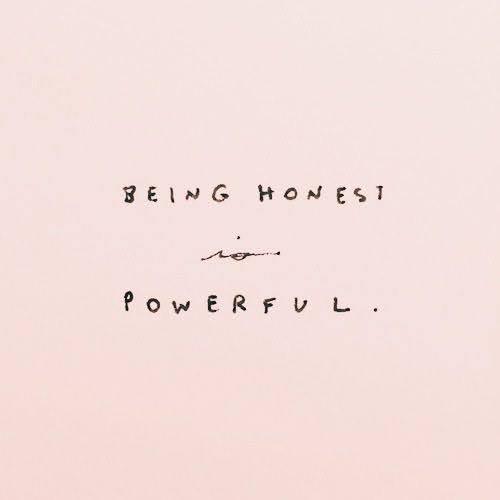
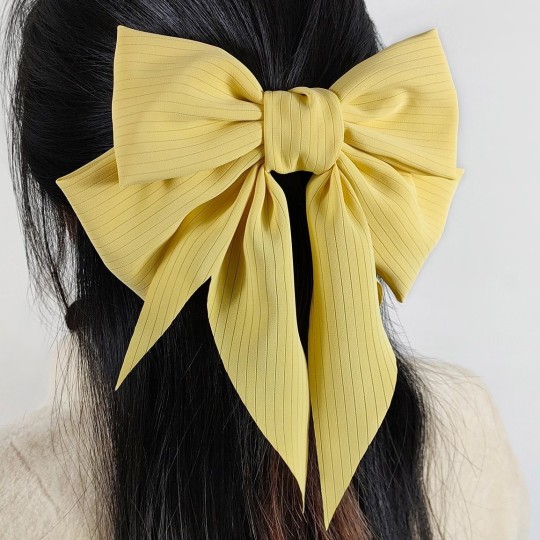



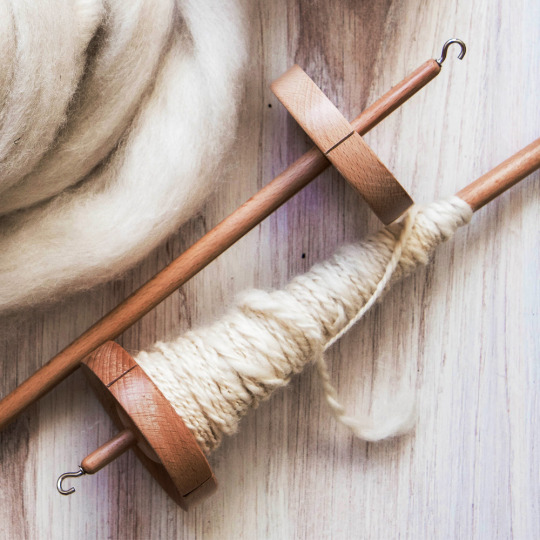



Maple Spinner
Parent's Story: Mother Holle (Frau Holle)
Powerful Qualities: Creative, Integrous, Optimistic
Roommate: Mildred Goldstraw
Secret Heart’s Desire: I would love to open my own bakery one day. I love baking bread and other sweets.
My “Magic” Touch: I can always tell when something is ready to be taken out of an oven. I know it doesn’t sound very cool, but it has saved a few loaves from being overbaked.
Storybook Romance Status: Marcel Prince is really sweet, but Ian Lear,… OH! You know what! Nevermind! It’s not important!
“Oh Curses!” Moment: I tend to say “Yes” even when I should “No.” I can’t help it! When someone asks for help, I have to help them!
Favorite Subject: Cooking Class-ic. I love learning new recipes!
Least Favorite Subject: Dance Class-ic. I have two left feet.
Best Friends Forever After: My sister Birch, Alanna Dale, Ivy Eden, and Ginger Breadhouse.
#my posts#ever after high#art#eah#aesthetic#moodboard#maple spinner#frau holle#mother holle#mildred goldstraw#birch spinner#alanna dale#ivy eden#ginger breadhouse#cottagecore#cottage aesthetic#naturecore#rebel#grey haired girl#the golden girl#eah oc
37 notes
·
View notes
Text
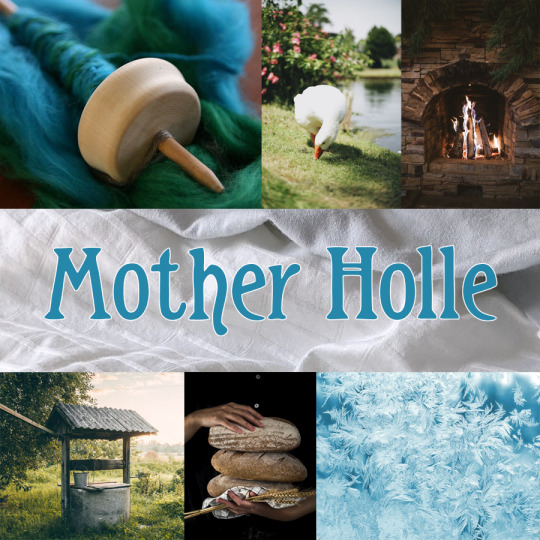
Mood board for the Goddess Holle or Holda. She is a deity of hearth and home, of spinning, magic, snow, and winter. She is also the leader of the Wild Hunt and the Queen of witches and alves.
Sources: [X] [X] [X] [X] [X] [X] [X]
#deity#moodboard#pagan#paganblr#holle#holda#goddess#frau holle#vrouw holle#mother holle#snow#winter#hearth#gleaming grove#personal pantheon#veiled silence#hearthlight#fern's practice
22 notes
·
View notes
Text
Mother Holle
Comprising symbolism and moral teachings, the well-known German folktale Mother Holle was gathered by the Brothers Grimm. It chronicles the meetings of two sisters—one compassionate and hardworking, the other lazy and selfish—with the supernatural figure of Mother Holle. Through their encounters, the narrative investigates issues of fairness, diligence, and the results—or penalties—of one's actions.

In the story, the conscientious and neat sister is assigned to spin thread and unintentionally drops her spindle down a well. She discovers herself in a magical realm governed by Mother Holle as she leaps into the well to get it. By assisting Mother Holle with daily tasks, including shaking the feather bed to create snow on Earth, the girl exhibits her work ethic. Inspired by her commitment, Mother Holle presents her with a gold shower to represent the results of her work and moral character.
The indolent sister, on the other hand, chooses to go find Mother Holle and get the same benefits since she is jealous of her sibling's sudden fortune. She disappoints Mother Holle by neglecting her chores and refusing to put in the work, nevertheless. She is punished with a shower of pitch instead of gold; this clings to her always as a reminder of her slothfulness and selfishness. The sisters' sharp differences highlight how directly one's actions have results.
Mother Holle herself is an interesting person who embodies both judgment and care. She stands for a natural justice force, rewarding good behavior and punishing negative. Her world's mystical backdrop and her function as a moral arbiter help to give the narrative ageless appeal. Mother Holle's character also incorporates elements of old European folklore, in which women were sometimes portrayed as strong figures linked to seasons and the earth.

The story of Mother Holle is still pertinent today since its lessons cut across time and culture. It warns against greed and idleness and promotes values including hard effort, humility, and compassion. Readers of all ages will still find resonance in the novel by having these teachings presented in a creative and captivating manner. Its ongoing appeal is evidence of the ability of narrative to transmit morals and motivate contemplation.
2 notes
·
View notes
Note
What would be the backstory of Shuriki from Elena of Avalor, where did she come from, and why was she so intent on conquering Avalor
Ok so here's what I've come up with:
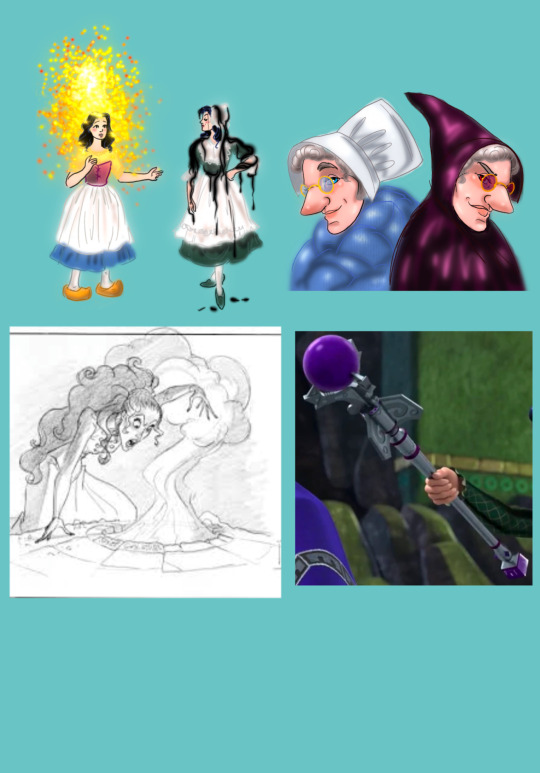
Her real name is Fran, and years ago in the Northern Isles she and her twin sister Nan were taken in as maids a strange old woman called Frau Holle, who turned out to be a sorceress. She blessed Nan for her industry and kindess but cursed Fran for her laziness and selfishness. Nan creates diamonds and pearls anytime she sings and eventually marries a king, while Fran has toads and snakes fall out of her mouth anytime she speaks and is understandablely shunned.
However she doesn't give into her curse and seeks out a way to change her fate, eventually coming to the attention of Frau Holle's twin sister Frau Trude, who's as wicked as her sister is good. Frau Trude trains the angry young girl in magic, breaking the toad spell, and helps her to spread chaos within her sister’s kingdom.
Eventually she is overcome by the forces of good, and Nan, now Queen, in mercy banishes her sister from the Northern Isles. Before she goes though Fran seeks to divine what new opportunities for power lie within her reach, and has Frau Trude divine her future.
The vision is hazy and Fran doesn't have time to hear all of it before th soldiers come to drive her out, but the old witch forsees that she will one day rule over a kingdom across the sea called Avalor, and will hold the powerful "Scepter of the Night" at one point.
Fran takes this as gospel and determines to build up her power again to accomplish this Destiny. And so she does.
Two little side things, part of the reason she bans music is that it reminds her of her sister's golden singing gift (and the cruel songs people would sing about her speaking toads).
And her chosen name "Shuriki" is a mispelled/misheard version of the old Maruvian word "Chiriqui" which means Valley of the Night, as she wanted a name that would point to her destiny to weild the Scepter of Night, and she didnt have enough respect for the culture of the land she took over to spell or pronounce it correctly
#Chiriqui is a real life place name in Panama that really does mean Valley of the Moon#i tried to find an explanation for why her name doesn't really fit her and thats what i came up with#shuriki#elena of avalor#disney#asks#disneyverse#villain backstory#disney villains#my art#frau holle#mother holle#frau trude#diamonds and toads#fairytales
36 notes
·
View notes
Photo
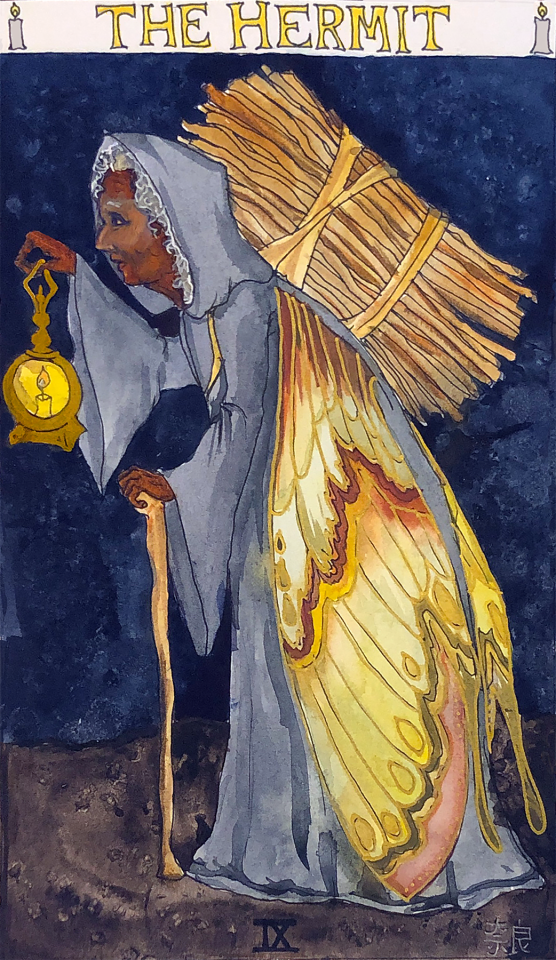
The Hermit. Art by Nara Lesser, from Neurotic Owl’s Faerytale Tarot.
I had one false start before I realized the character would work better on a different card (vague vague super vague), but the only issue when I picked this character/trope/repeating theme is that she almost never gets a name. Mother Holle in Grimm’s fairytales is one version, but a version that reads less hermit-y to me, so she’ll likely turn up elsewhere – maybe in the lesser arcana. But in tons of different stories, the hero or heroine runs into a fairy in disguise.
Let’s go with a specific example that you’re likely to know – a cruel stepmother sends her sweet, hard-working stepdaughter out into the woods, where the girl meets an old woman staggering along under a huge bundle of sticks, or begging for food, or trying to draw water from a well. The girl obviously helps her immediately, and she’s rewarded; when she speaks, pearls and diamonds drop from her lips. (Which honestly sounds terrible to me but again, fairytale rewards are what they are and you just have to go with them.) When the girl gets home with her fabulous new source of wealth, the stepmother immediately sends her lazy, bitchy daughter out to get rewarded the same way. The girl is rude and dismissive to the secret fairy, so she comes home spitting out frogs and snakes instead of gems. This, granted, seems worse, even though I’m generally pro-frog and snake and find them pretty cute. Not in the mouth, though, please.
So that’s the basic idea -she wanders the wilderness testing travelers for virtue and rewarding or punishing accordingly.
#Nara Lesser#Neurotic Owl’s Faerytale Tarot#The Hermit#Major Arcana#Tarot#Folklore#The Brothers Grimm#Mother Holle
10 notes
·
View notes
Text

Now that our visual novel Chronotopia: Second Skin has been released, we’re starting an event called ✨Fairytale Friday✨. Every Friday, we’ll discuss a tale from the game’s archives! 😃
❄️Isn’t winter the perfect time to talk about Old Mother Frost?❄️

A wicked stepmother favors her own daughter and mistreats her stepdaughter. One day, the poor girl drops her spinning tool in the well and jumps after it to retrieve it 😱. Instead of just dying, she arrives in a magical place where she meets the titular character 🧙♀️.
Old Mother Frost makes the girl work for her & showers her with gold as a reward for her diligence 👑🚿. When she gets back home, the stepmother immediately gets jealous of her good fortune and convinces her own daughter to go into the well 😰.

But the biological daughter is lazy and botches the job, angering Old Mother Frost who sends her back home. This time she’s showered with tar...possibly for all her life 😬.
youtube
I like how this tale was adapted in Sound Horizon’s Märchen (a great album BTW).
💜You can buy Chronotopia on Steam💜
#visual novel#traumendes madchen#chronotopia#fairytale#fairy tales#fairytale friday#frau holle#mother holle#Youtube
3 notes
·
View notes
Text

Její matka moji matku nenávidí.Ta žena neustále hlídá náš dům, aby ji můj přítel neošukal.
3 notes
·
View notes
Text
#January#6th January#La Befana#Perchta#witches#Epiphany#Mother Holle#Frau Holle#Christmas traditions#Baboushka#Berchta#articles#A Scary Little Christmas#Sarah Elizabeth Troop
3 notes
·
View notes
Text
Some of my fav things I've made this Christmas :]
Paper old timey citrus garlands

This little elf cap

Little Mother Holle doll to spread snowflakes around

This wreath and centerpeice using pine branches and cones from our tree out back


And finally this faux fire place!

(Now I have to collapse and get energy to do presents xD)
#Christmas#christmas decorations#crafts#diy#mother holle#there's like a ton more decorations#i did themed areas xD#but will probably do a different post for that#forgive the showing off I just did the whole house myself this year and I'm quite proud :)#Craftmas#my crafts
45 notes
·
View notes
Text
Nobody seems to care about poor Frau Holle... But it won't stop me from posting about her :p I started exploring an article about the fairytale and the character here ; there's another set of information within the article I want to share with you. It is about the various analysises that can be performed about the heroine-girl's action.
If you don't recall, when the girl falls down the well into the world of Frau Holle, she encounters a talking oven which asks her to remove its bread before it will burn, and then a talking apple-tree which asks her to pick its ripe apples before they will rot. It is concluded by the girl encountering Frau Holle who tasks her with keeping up the house clan and shaking the pillows out of the window to cause the snow to form.
As the article points out, this entire passage is a "formation" passage, an "initiation" journey. The girl falls down the well into a mysterious land of abundance, eternal summer and talking inanimate objects: this is a traditional "entrance to the Otherworld" story. But the fall down the well also has a dual symbolism. The most famous one, very often reused, is the symbolism of death: falling down the well usually kills a person, it is also a descent into the underground, the original text of the Grimm implied that the fall might have been a form of suicide (more about this later), wells are traditionally associated with ghosts, and finally Frau Holle herself and her house have been analyzed as symbols of death. But that's just one reading - the other, closely associated to the first since remember Death and Sleep are twins, proposes to read the journey to Frau Holle as a dream. Falling down the well could represent someone literaly "falling asleep", or falling into the sleep ; especially since the bed is such a strong focus in this magical place where seasons are mixed and the up and down don't mean anything anymore. The return to the world of the humans would then mean the girl "waking up".
But what is even more interesting is to look at the specific tasks the girl undergoes. Yes, of course, we can just look at this as just "Oh it's the typical trope of the girl helping poor people in need"... But there's more to that.
The most obvious and highlighted symbolism of those tasks is what the article calls a "social moral". By performing these tasks, the girl isn't just helping random things in need: she is obeying to figures of authority giving her orders, she acts as an assistant and a servant, and thus "learns her place" within the world. This is especially obvious when you consider that the tasks the girl performs are... domestic chores. Not just any domestic chores: they are the jobs typically devoluted to girls and women in the rigidly-gendered society of the 19th century. The girl learns what all "good girls" must learn: taking care of the bread in the oven, picking up the apples in the orchard, cleaning the house, preparing the beds. Cleaning and cooking. This symbolism was probably insisted by the brothers Grimm themselves since we know they purposefully modified their fairytales so that they would be more "fit" for the education of young people...
But this is just one reading and one level of symbolism of the fairytale. If fairytales only meant one thing, they wouldn't be fairytales - and there's always deeper meaning beyond the obvious ones. In the case of Frau Holle, the article takes back ideas developed by Euge Drewermann: if we decide to look at the heroine's actions as made out of altruism rather than obediance, we fall back onto the traditional trope "the good hero helps those in need"... But we can dig deeper than that.
The girl isn't just helping people or performing social tasks... The girl answers necessities. She answers to pressing need linked to the way the world works. She removes the bread, because if the bread is not removed the fire will burn it - there is a pressing need to avoid that. The apples are to be picked because they are ripe and it is time: they are under threat of rotting away. And the pillows need to be shaken because snow needs to fall... There is a "cosmic need" at work here, tied to the very elements (fire, snow) and to a race against a force of nature or flow of time that cannot be stopped (the apples that will rot for example). As such Drewermann decided to highlight an opposition in the tale between Frau Holle and the wicked stepmother. Frau Holle is in this dichotomy, "Mother Nature" and the stepmother a "Mother Society": because the stepmother embodies by her cruelty and favoritism all the forms of unbalance, injustice and problems caused by the social life, and by a human society where greed, selfishness and personal gain rule - this is the bad "Mother Society". Frau Holle meanwhile is the "Mother Nature", of the natural world, as a goddess of the seasons, but as such she also embodies as a form of balance and harmony: as a spirit of cycles and elements, she also represents a form of cosmic justice and natural order, opposed to the disorder of a human society. As such, the heroine's kindness and altruism is actually part of a greater system where humanity is in cohesion with nature and the world around it - the girl answers to the cosmic and biological order, and is thus rewarded by it. We can almost go into a philosophical reading of the tale which teaches us that we will be rewarded if we simply approach the world under a benevolent angle and with an accepting mindset, and if we do our best to serve and help the universe around us. We might become submit to the whims and needs of other inhuman powers beyond our own consideration (such as a talking oven and a talking tree), but by doing so we actually not only get rewarded - we become able to literaly "go beyond despair", the same way the girl went beyond the well (symbol of her suffering and her family's cruelty) into the peaceful and heavenly realm of Frau Holle where everything is in balance and perfect.
This reading could almost be read as a form of ecology before its time - and as such, many modern retellings of the fairytale insist on this "ecological" aspect of the legend, of how the story of Frau Holle can be read not just as a girl learning to be a girl in a patriarchal society, but as someone learning how to respect and serve nature, and an illustration of the self-destruction that will be caused by those who disrespect or neglect nature and its needs.
#frau holle#mother holle#grimm fairytales#fairytale analysis#brothers grimm#lady holle#mother nature
39 notes
·
View notes
Text




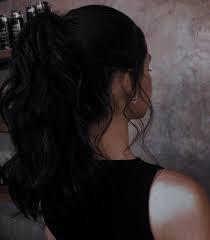

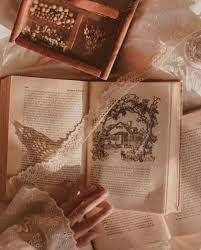


Birch Spinner
Parent's Story: Mother Holle (Frau Holle)
Powerful Qualities: Assertive, Confident, Intelligent
Roommate: Petra Pan
Secret Heart’s Desire: I love studying animals! Well, more like frogs, toads, and insects. I know not everyone likes them, but Hopper shares my interest.
My “Magic” Touch: I know most princesses can understand animals, but I can talk to frogs, toads, and bugs! I think it’s very unique.
Storybook Romance Status: Daring Charming, duh! He’s just the most handsome boy at Ever After! Well, Hopper’s cute too I guess.
“Oh Curses!” Moment: Everyone thinks I’m spoiled just because of how my story goes! I’m just assertive.
Favorite Subject: Geografairy. I love learning all about Ever After’s different environments and the animals that live there!
Least Favorite Subject: Swamp Swimming! I may like a day at the lake as much as the next girl, but in a swamp? No thank you!
Best Friends Forever After: Of course my sister, Maple, my roommate Petra Pan, and also Alanna Dale, Lily Bo Peep, and Hopper Croakington.
Pet: My pet toad, Hopscotch.
#my posts#ever after high#art#aesthetic#eah#moodboard#birch spinner#background characters#frau holle#mother holle#petra pan#maple spinner#alanna dale#lily bo peep#hopper croakington ii#cottage core#cottage aesthetic#gardencore#rebel#girl in grey#the pitch girl#eah oc
19 notes
·
View notes
Text

I asked for pancetta! It's Italian bacon. It's nothing like bacon! It's cured with salt, it's not smoked. It bastes the veal, it keeps it from drying out. There can be no substitute!
#northern exposure#nx#bacon#john cullum#adam arkin#holling vincoeur#adam#90s television#90s tv shows#3x18 my mother my sister
11 notes
·
View notes
Text
Who is The Witch Mother?
Like the Witch Father, the Witch Mother is the dual-natured Archetypal Divine Feminine. She is life and death, creation and destruction, She is all. In Traditional Witchcraft, She is an initiator into witchcraft and the being that creates and molds the world to Her whim. The Witch Mother is Witchcraft itself. The Witch Mother, much like the Witch Father, is another enigmatic spirit essential…

View On WordPress
#Aradia#Baba Yaga#Diana#Frau Holle#Mother Hulda#Mother of Witches#Queen of Elphame#spirit work#Traditional Witchcraft#Witch Mother#witchcraft
40 notes
·
View notes
Photo

Knight of Pentacles. Art by Nara Lesser, from Neurotic Owl’s Faerytale Tarot.
This one is a really good answer to when I’m all ‘can’t art, not inspired’ because I had no strong feeling going in to this card and dicked around a ton with every part of it and now I really really dig it.
I recapped Mother Holle back on The World, so no need to do that again, I think. For a card about dogged perseverance and hard work the virtuous daughter who finds a temporary loving home with Mother Holle and eventual great rewards by, basically, volunteering to do helpful chores seems ideal.
#Nara Lesser#Neurotic Owl’s Faerytale Tarot#Knight of Coins#Knight#Coins#Minor Arcana#Tarot#Folklore#Mother Holle
8 notes
·
View notes